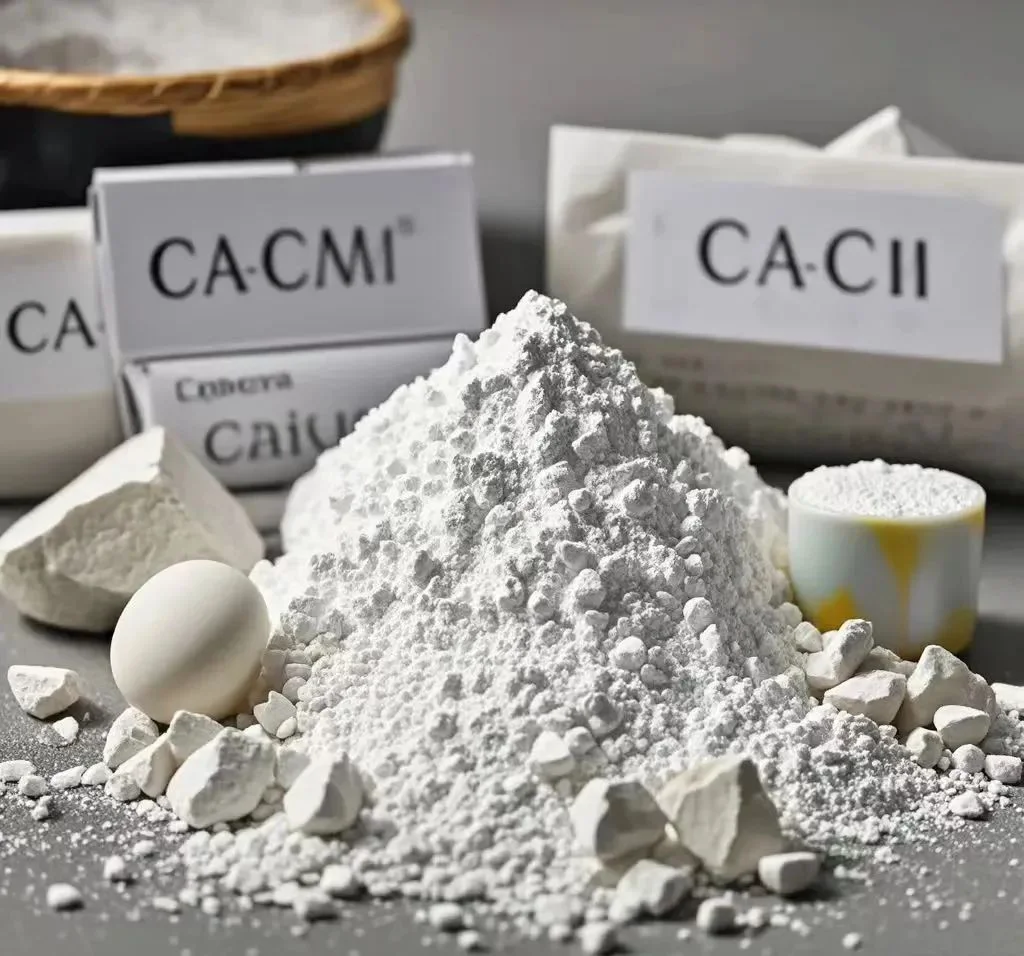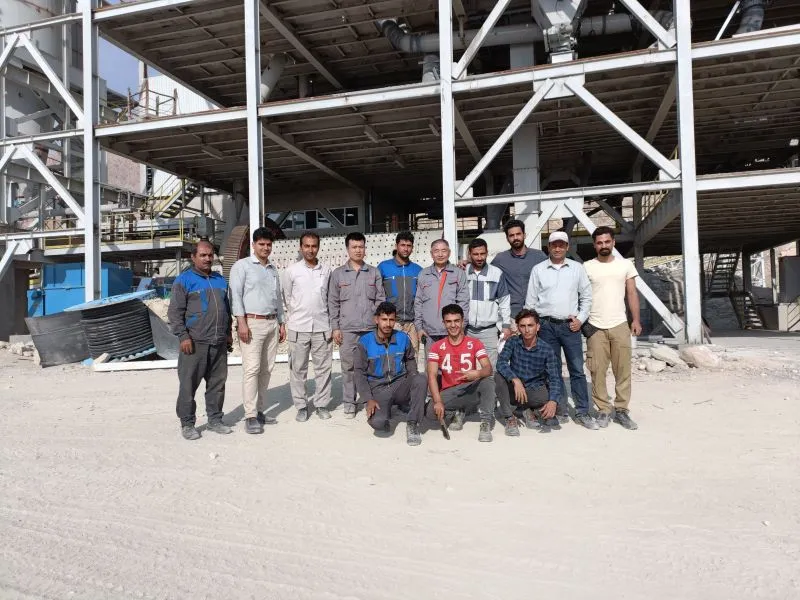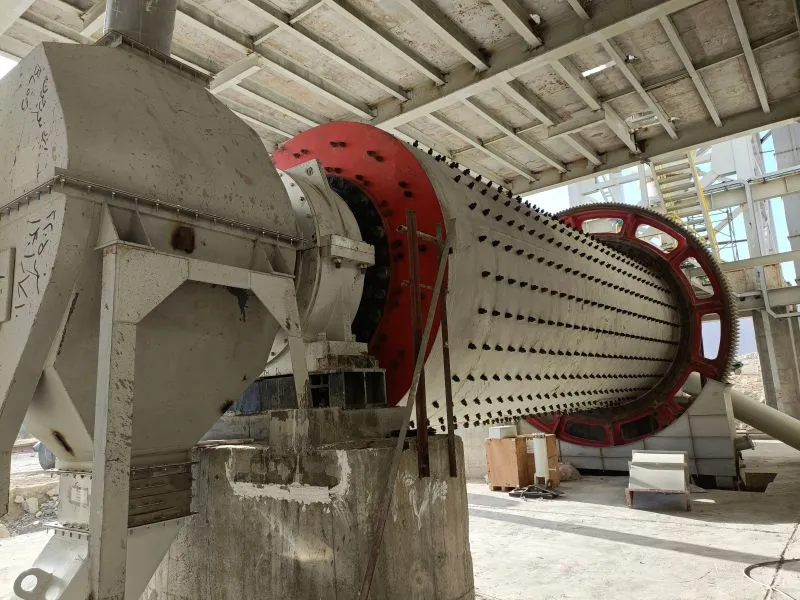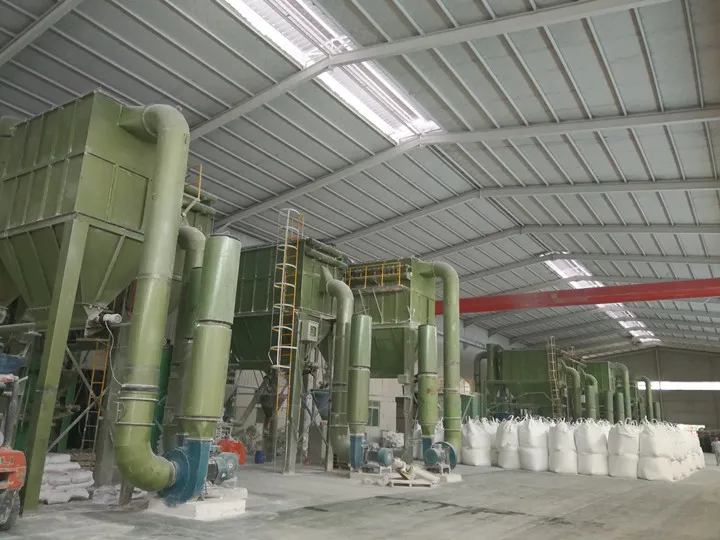Dry grinding of calcium carbonate makes heavy calcium carbonate. It is a common process. It is widely used. It has a low equipment cost, a simple process, and high output. Its technology is mature and it consumes little energy. However, some problems may arise in production, including but not limited to:

Granularity Limitation in Dry Grinding of Calcium Carbonate
Dry grinding can make products below 2500 mesh. But, if the size exceeds this, it is not cost-effective. Energy use and costs rise sharply. Therefore, dry grinding may not be the best choice for ultrafine powders.
The energy consumption and cost in Dry Grinding of Calcium Carbonate
As the demand for smaller powder particles grows, so does the energy use of dry grinding. This raises production costs and makes it uneconomical to produce ultrafine calcium carbonate.
Particle size distribution
Dry-milled products have a broad, often multimodal, particle size distribution. This is a challenge in applications that need precise control of it.
Particle shape
The heavy calcium particles from dry grinding are irregular, with sharp edges. This may affect their use in products. Some industries, like plastics and rubber, need a specific particle shape.
Moisture Control of Powders
The moisture content of dry-processed heavy calcium is hard to control. It is usually higher than that of wet-processed products. This may limit its use in low-moisture applications, like plastic processing. That requires good fluidity and dispersibility.
Modification Problem
For fine powders above 1250 mesh, dry modification may cause low activation and clumping. This affects the modification and the final product’s performance.
Equipment wear and tear
The dry grinding process causes direct collisions between the material and the grinder. This greatly wears the equipment. It requires regular maintenance and parts replacement, increasing costs.
Environmental issues related to the dry grinding of Calcium Carbonate
Dry grinding may create more dust. This harms the environment and workers. It needs a good dust removal system to control it.
Temperature control
The dry grinding process may generate higher temperatures from friction. This may affect the powder’s physical properties. For example, special attention should be paid to the handling of heat-sensitive materials.
Product Purity
Dry grinding may create dust, introducing impurities. This can lower the final product’s purity.
To solve these problems, producers usually try to:
- 1. Optimize process parameters.
- 2. Use efficient grading equipment.
- 3. Improve grinding media.
- 4. Upgrade surface modification tech.
These steps aim to boost product quality and production efficiency.
Equipment for dry grinding of Calcium Carbonate
ball mill
A ball mill is a good tool for dry grinding calcium carbonate. It is efficient and versatile, so many industries use it. Here’s a detailed overview of its workings and uses in calcium carbonate processing.

The operation of a ball mill involves the following key steps:
Feed Preparation: First, we crush calcium carbonate, from limestone or marble, to 10mm-20mm using crushers.
Grinding Process: The crushed material is fed into a ball mill. It is a rotating cylinder filled with grinding media (steel or ceramic balls). As the cylinder rotates, the balls fall back into it. They hit the material, reducing its size through attrition and impact.
Classification: After grinding, air classifiers may classify the material. They separate particles by size to ensure uniformity in the final product.
Advantages of Using Ball Mills for Dry Grinding
Cost-Effectiveness: Ball mills are cheaper to install and run than other grinding tech.
Versatility: They can handle various material hardness levels. So, they suit different grades of calcium carbonate.
Control Particle Size: Change the grinding time, speed, and media. This will adjust the particle size distribution. Ball mills can usually make calcium carbonate powders. Their particle sizes range from 20 mesh to 200 mesh.

Ring roller mill
A ring roller mill is an effective solution for the dry grinding of calcium carbonate, offering advantages in terms of efficiency and product quality. Here’s an overview of its operation, benefits, and applications.

Overview of Ring Roller Mills
Ring roller mills, or ring and ball mills, use a mix of impact and shear forces to grind materials. The key components include:
Grinding Ring: A circular path where the grinding occurs.
Rollers: They are inside the ring. They press the material to reduce its size.
The material is fed into the mill, where it is crushed between the rollers and the grinding ring. The centrifugal force helps keep the material in contact with the grinding surfaces. This enhances the grinding efficiency.
